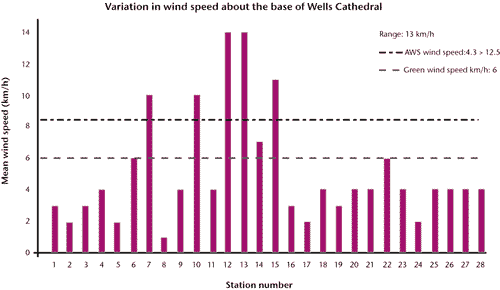Fieldwork activity Using Bubbles to Map the Wind Microclimate of Your School
Resource developed for National Fieldwork Week 2022
Download Instructions as a pdf
Description of the Activity
- When we think of microclimates, the focus is often on temperature. But, the way that buildings and vegetation interact with the wind are just as important. Students will relate to this activity because the places where the wind is funnelled between buildings will be less comfortable. On the other hand, the places where the wind is trapped, with the bubbles going round in eddies, will be the places where leaves and litter tend to collect. In urban areas, places like this are very concerning, as pollutants in the air will also collect and the air quality can be significantly poorer than elsewhere.
- Wind speed can be hard to include in fieldwork as anemometers tend to be either fragile, expensive, hard to use and/ or very inaccurate. Bubbles provide a fun, cheap and accessible tool to visualise wind speed and direction and collect representative numerical data.
- Using bubbles, a compass and base map of their school grounds, students make a wind speed and direction map by blowing bubbles in different places and seeing where they go. Wind speed can be estimated by pacing 5 steps in the direction the bubbles travel and timing how long the bubbles to travel that distance, several times and in different places. The wind speed and direction can be recorded on the map by drawing arrows of varying length.
Length of time: One Lesson
Suitable locations: School grounds – including at least one building which students can walk all the way around. Choose a day which is windy or the results will be disappointing. If possible, repeat when the wind is in a different direction.




